|
Rather than always linking to Wikipedia entries for common topics, I have
been using ChatGPT to research and post brief summaries on many technical
topics. The results are not always perfect, but I edit them as needed to be
accurate. Courts have ruled that AI-generated content is not subject to
copyright restrictions, but since I modify them, everything here is protected by
RF Cafe copyright. Here are the major categories.
Electronics & High Technology Company
History | Electronics & Technical Magazines
| Electronics & Technology Pioneers History
| Electronics & Technology Principles
| Technology Standards Groups & Industry Associations
| Vintage Vacuum Tube Radio Company History
| Electronics & High
Technology Components |
Societal Influences on Technology |
Science & Engineering Instruments
- See Full List -
 Andre Marie Ampere Andre Marie Ampere
André-Marie Ampère (1775-1836) was a French physicist and mathematician who is
considered to be one of the founding fathers of electromagnetism. He made numerous
contributions to the study of electricity and magnetism, including the discovery
of the basic principles of electromagnetism and the development of the theory of
electrodynamics.
Ampère was born in the city of Lyon, France, and showed an early aptitude for
mathematics and science. He studied at the École Polytechnique in Paris and later
taught mathematics there. During his lifetime, he made important contributions to
several fields, including physics, mathematics, chemistry, and astronomy.
One of Ampère's most significant contributions to science was his discovery of
the relationship between electricity and magnetism. He discovered that when an electric
current flows through a conductor, it creates a magnetic field around the conductor.
This discovery led to the development of electromagnetism, which became one of the
most important branches of physics.
Ampère also developed a mathematical theory to describe the interaction between
electric currents and magnetic fields. This theory, known as Ampère's law, states
that the magnetic force between two currents is proportional to the product of the
currents and the distance between them. This law is still used today in the design
of electrical and electronic devices, such as motors and generators.
In addition to his work on electromagnetism, Ampère also made important contributions
to the study of chemistry and astronomy. He discovered the relationship between
electricity and chemical reactions, which led to the development of electrochemistry.
He also made observations of the sun and planets, and proposed a theory to explain
the motions of celestial bodies.
In recognition of his many contributions to science, the standard unit of electrical
current, the ampere, was named after him. Today, Ampère's legacy continues to inspire
new generations of scientists and engineers, who build upon his work to advance
our understanding of electricity and magnetism.
- See Full List -
 Edward Appleton Edward Appleton
Edward Appleton was a British physicist who made significant contributions to
the study of the ionosphere. In 1947, he was awarded the Nobel Prize in Physics
for his investigations of the physics of the upper atmosphere, especially for the
discovery of the Appleton layer of the ionosphere. Appleton conducted research on
radio wave propagation and the behavior of the ionosphere, which is the upper region
of Earth's atmosphere consisting of charged particles. He discovered that the ionosphere
is composed of several layers with varying ionization densities. One of these layers,
known as the Appleton layer or F2 layer, is situated at an altitude of around 200
to 400 kilometers (120 to 250 miles) and is important for long-distance radio communication.
Appleton's work on the ionosphere and its impact on radio waves laid the foundation
for advancements in radio communication, including the development of techniques
like skywave propagation, which allows radio signals to be transmitted over long
distances by bouncing them off the ionosphere. us article, "The Intel 8080 Microprocessor
and the MCS-80 Family", in which he predicted that the number of transistors on
a microchip would double every two years, leading to exponential growth in computing
power. This prediction, known as Moore's Law, has proven remarkably accurate over
the past several decades and has become a guiding principle of the technology industry.
Moore retired from Intel in 1997 but has remained active in the field of science
and technology. He has received numerous honors and awards, including the National
Medal of Technology and Innovation in 1990 and the Presidential Medal of Freedom
in 2002. Today, Gordon Moore is widely recognized as one of the most influential
figures in the history of the semiconductor industry.
- See Full List -
Apollo 11
The Apollo 11 moon landing was a historic event that occurred on July 20,
1969. It was the first manned mission to land on the Moon, and it remains one of
the most significant achievements in human space exploration.
The crew of Apollo 11 consisted of three astronauts: Neil Armstrong, Buzz
Aldrin, and Michael Collins. Armstrong and Aldrin descended to the lunar surface
in the Lunar Module named "Eagle," while Collins remained in orbit aboard the
Command Module named "Columbia."
Neil Armstrong famously became the first person to set foot on the Moon,
uttering the famous words, "That's one small step for man, one giant leap for
mankind." Buzz Aldrin joined him shortly afterward. The two astronauts conducted
experiments, collected samples, and planted the American flag on the lunar
surface.
The mission lasted approximately eight days, with Armstrong, Aldrin, and
Collins safely returning to Earth on July 24, 1969. Their successful mission
demonstrated the United States' technological capabilities and fulfilled
President John F. Kennedy's goal of landing humans on the Moon before the end of
the 1960s.
The Apollo 11 moon landing marked a significant milestone in space
exploration and sparked interest and inspiration worldwide. It paved the way for
further lunar missions and contributed to our understanding of the Moon's
geology, its formation, and the origins of the solar system.
- See Full List -
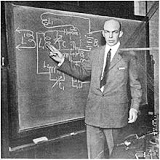 Major
Edwin Howard Armstrong Major
Edwin Howard Armstrong
Major
Edwin Armstrong was an American electrical engineer and inventor who is widely
credited with the invention of frequency modulation (FM) radio. FM radio is a method
of radio transmission that uses frequency modulation to provide high-fidelity sound
over radio waves.
Armstrong first developed FM radio technology in the early 1930s, after many
years of experimentation with radio technology. FM radio offered many advantages
over the existing AM radio technology, including better sound quality, less interference,
and greater immunity to noise.
However, despite the clear advantages of FM radio, Armstrong faced significant
opposition from the radio industry, which was heavily invested in AM radio and resistant
to change. In the 1940s and 1950s, Armstrong engaged in a series of legal battles
with the industry, fighting for the recognition and adoption of FM radio.
Sadly, Armstrong's life was plagued by personal and financial difficulties, and
he suffered from depression. In 1954, he committed suicide by jumping from the thirteenth
floor of his New York City apartment building.
Despite his tragic end, Armstrong's contributions to the development of radio
technology have had a lasting impact. FM radio has become the standard method of
radio transmission for music and high-fidelity audio, and is still widely used today
in broadcasting, mobile communications, and other applications.
There are several biographies of Major Armstrong, including "Major Armstrong:
Architect of FM Broadcasting" by Loren W. Acton and "Empire of the Air: The Men
Who Made Radio" by Tom Lewis. These biographies detail his life, including his early
experiments with radio technology and his invention of FM radio.
Major Edwin Armstrong was involved in several patent lawsuits during his lifetime,
particularly in relation to his invention of frequency modulation (FM) radio. Here
are some key examples:
Patent disputes with Lee De Forest: In the 1910s and 1920s, Armstrong became
embroiled in a series of legal battles with the American inventor Lee De Forest
over patents related to radio technology. Armstrong claimed that De Forest's patents
were invalid and that he himself had made the key breakthroughs in radio transmission.
The dispute was eventually settled in Armstrong's favor in 1934, after many years
of litigation.
Patent disputes with RCA: In the 1930s and 1940s, Armstrong was involved in several
patent lawsuits with the Radio Corporation of America (RCA), one of the largest
radio manufacturers in the world. RCA had initially expressed interest in FM radio
technology, but eventually abandoned it in favor of its own system, known as amplitude
modulation (AM). Armstrong claimed that RCA had stolen his ideas and infringed on
his patents. The legal battles between Armstrong and RCA were long and contentious,
and included appeals to the US Supreme Court. In the end, however, RCA was able
to use its greater financial resources to outlast Armstrong in court.
Personal financial difficulties: Throughout his life, Armstrong struggled with
personal and financial problems. He invested much of his own money into developing
and promoting FM radio, but he was unable to profit from it due to the opposition
of the radio industry and the prolonged legal battles. In addition, Armstrong's
wife suffered from mental illness and required expensive medical treatment, further
draining his finances. These financial pressures may have contributed to Armstrong's
decision to take his own life in 1954.
Overall, Armstrong's legal battles highlight the challenges faced by inventors
and innovators in the face of opposition from established industries and powerful
corporations.
- See Full List -
 Charles Babbage Charles Babbage
Charles Babbage (1791–1871) was an English mathematician, philosopher, inventor,
and mechanical engineer, often referred to as the "father of the computer." He was
born in London, England, into a wealthy family. Babbage's contributions laid the
groundwork for the development of modern computers, although his designs were not
fully realized during his lifetime.
One of Babbage's most notable inventions was the Difference Engine, a mechanical
device designed to compute polynomial functions. It was essentially an automatic
mechanical calculator capable of tabulating polynomial functions, eliminating errors
that often occurred in manual calculations. Although he conceived the idea in the
early 19th century, he struggled to secure sufficient funding to complete the project.
Eventually, a small portion of the Difference Engine was constructed, but the full-scale
version was never completed during Babbage's lifetime.
Babbage's work on the Difference Engine led him to conceive an even more ambitious
project, the Analytical Engine. This machine was designed to be programmable and
capable of performing various types of calculations. It incorporated concepts such
as loops, conditional branching, and memory—a design remarkably similar to modern
computers. Although the Analytical Engine was never fully constructed in Babbage's
time due to financial and technical constraints, his ideas laid the foundation for
the development of modern computing.
Babbage was not only a visionary inventor but also a prolific writer and thinker.
He contributed to various fields, including mathematics, economics, and philosophy.
His ideas on computation and automation were far ahead of his time and have had
a profound impact on the development of technology.
Despite his groundbreaking work, Babbage struggled to gain widespread recognition
during his lifetime. It was only in the 20th century that his contributions to computing
were fully appreciated, and he became recognized as one of the most important figures
in the history of technology.
- See Full List -
 Heinrich Barkhausen Heinrich Barkhausen
Heinrich Georg Barkhausen (1881-1956) was a German physicist who made important
contributions to the study of electromagnetism and solid-state physics. He is
best known for his discovery of the Barkhausen effect and Barkhausen noise,
which occur in ferromagnetic materials.
Barkhausen studied physics at the University of Berlin, where he earned his
doctorate in 1907. After working as a research assistant for several years, he
became a professor at the Technical University of Dresden in 1920.
In 1919, Barkhausen discovered the phenomenon of Barkhausen noise, which is
the noise caused by the movement of magnetic domains in a ferromagnetic
material. His work on the Barkhausen effect provided important insights into the
behavior of ferromagnetic materials and helped to establish the field of
solid-state physics.
Barkhausen also made significant contributions to the study of electrical
oscillations and electromagnetic waves. He developed a method for measuring the
frequency of high-frequency electrical oscillations, known as the
Barkhausen-Kurz method, which is still used today.
During World War II, Barkhausen worked on the development of radar technology
for the German military. After the war, he was briefly held as a prisoner of war
by the Allies before returning to his academic work. Barkhausen received many
honors during his career, including the Max Planck Medal and the Hughes Medal.
- See Full List -
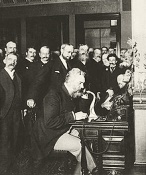 Alexander Graham Bell Alexander Graham Bell
Alexander Graham Bell was a Scottish-born inventor, scientist, and engineer who
is credited with inventing the telephone. Born on March 3, 1847, in Edinburgh, Scotland,
Bell was fascinated by sound and speech from an early age, influenced in part by
his family's work in elocution and speech therapy for the deaf. Alexander Graham
Bell passed away on August 2, 1922.
In 1876, Bell was granted the first U.S. patent (US174465A) for the invention of an "improvement
in telegraphy" - what we now know as the telephone. This invention revolutionized
communication by allowing people to speak directly to each other over long distances,
essentially laying the foundation for modern telecommunications.
Beyond the telephone, Bell made significant contributions to various fields with
inventions including the Graphophone (US341214A,
an improvement of Edison's phonograph, which used wax-coated cylinders to record
sound), the metal detector (a primitive form
of the
metal detector in an attempt to locate a bullet lodged in President James
Garfield after he was shot in 1881), the photophone (US235199A, a device
capable of transmitting speech wirelessly using light), a hydrofoil boat (US1410876A, dubbed the HD-4, which set world
marine speed record of 70.86 mph), a manned tetrahedral kite, and "visible speech"
(a system of phonetic symbols designed to represent the sounds of speech visually).
- See Full List -
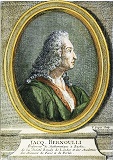 Jacques
Bernoulli Jacques
Bernoulli
Jacques Bernoulli (1654-1705) was a Swiss mathematician who, along with his
brother Jean Bernoulli, was instrumental in the development of calculus and the
application of mathematical principles to various fields.
Jacques Bernoulli was born into a family of mathematicians in Basel,
Switzerland, and showed an early aptitude for mathematics. He studied at the
University of Basel and then went on to study in Italy, France, and the
Netherlands. In 1687, he became a professor of mathematics at the University of
Basel, where he remained until his death.
Bernoulli made significant contributions to a variety of mathematical fields,
including calculus, number theory, probability theory, and physics. He is best
known for his work on the calculus of variations, a branch of mathematics that
deals with finding the optimal solution to a problem. In particular, he is
famous for the "brachistochrone problem," which involves finding the path taken
by a particle that travels between two points in the shortest time possible
under the influence of gravity.
Bernoulli also made significant contributions to the study of probability
theory. In 1713, he published "Ars Conjectandi," a book on probability that
introduced the concept of the Bernoulli distribution, which is named after him
and is still widely used in modern statistics.
- See Full List -
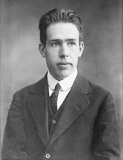 Niels Bohr Niels Bohr
Niels Bohr was a Danish physicist who made significant contributions to the field
of quantum mechanics, which revolutionized our understanding of the behavior of
atoms and subatomic particles. He was born on October 7, 1885, in Copenhagen, Denmark,
and died on November 18, 1962, in the same city.
Bohr received his undergraduate and doctoral degrees from the University of Copenhagen,
where he studied under the physicist Christian Christiansen. After completing his
doctoral thesis, which was on the properties of metals, he went to work with J.J.
Thomson at the Cavendish Laboratory in Cambridge, England, where he learned about
the newly discovered phenomenon of radioactivity.
Bohr's most significant contribution to physics was his model of the atom, which
he proposed in 1913. The Bohr model of the atom is a simplified representation of
the atom that is still taught in schools today. It depicts the atom as a central
nucleus surrounded by electrons in specific orbits or energy levels. According to
the Bohr model, electrons can move between these energy levels by absorbing or emitting
energy in the form of photons.
Bohr's model was significant because it explained many of the experimental observations
about the behavior of atoms that could not be explained by classical physics. His
model also helped to establish the concept of quantization, which states that energy
is not continuous but rather comes in discrete packets or quanta.
In addition to his work on the atomic model, Bohr made significant contributions
to the development of quantum mechanics. He proposed the principle of complementarity,
which states that particles can exhibit both wave-like and particle-like behavior,
depending on how they are observed. This principle is essential to our understanding
of quantum mechanics today.
Bohr also played a significant role in the development of nuclear physics. He
was one of the first physicists to study the behavior of atomic nuclei and helped
to discover the concept of nuclear fission. Bohr was a strong advocate for international
cooperation in science and was a vocal opponent of the development of nuclear weapons.
In recognition of his contributions to physics, Bohr received numerous honors
and awards, including the Nobel Prize in Physics in 1922. He was also the director
of the Institute of Theoretical Physics in Copenhagen, which became a center for
research in quantum mechanics and nuclear physics.
- See Full List -
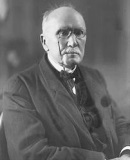 Édouard Branly Édouard Branly
Édouard Branly (1844-1940) was a French physicist and inventor. He made
significant contributions to the fields of physics and telecommunications during
the late 19th and early 20th centuries.
Branly is best known for his invention of the "Branly Coherer," which I
mentioned earlier. The Branly Coherer was an important development in the early
days of wireless communication, as it provided a means to detect and receive
radio waves.
In addition to the coherer, Branly conducted research in various areas of
physics. He studied the behavior of electric discharges and investigated the
properties of materials under the influence of electric fields. He also
conducted research on X-rays and their medical applications.
- See Full List -
 Samuel Hunter Christie Samuel Hunter Christie
Samuel Hunter Christie was an English mathematician and physicist who is best
known for his work in the field of electricity and magnetism, particularly for
his invention of the Wheatstone bridge circuit. He was born on May 8, 1784, in
London, England, and died on January 24, 1865, in Willesden, England.
Christie began his career as a civil engineer, but later became interested in
mathematics and physics. In the early 1820s, he began conducting experiments on
the electrical properties of metals and developed a method for measuring the
resistance of wires using a sensitive galvanometer.
In 1833, Christie invented a circuit for measuring the resistance of wires
that used a combination of known and unknown resistances, which he called a
"differential resistance measurer." This circuit was later improved upon by
Charles Wheatstone and became known as the Wheatstone bridge circuit.
Christie also made important contributions to the study of magnetism. In
1826, he discovered the phenomenon of diamagnetism, which occurs when a material
is repelled by a magnetic field. He also developed a method for measuring the
magnetic properties of materials using a torsion balance, which he described in
a paper published in the Philosophical Transactions of the Royal Society in
1833.
In addition to his scientific work, Christie served as a member of the Royal
Society and was appointed as the superintendent of the meteorological department
of the Board of Trade in 1854. He was also an accomplished linguist and
translator, and published several works on the grammar and literature of ancient
and modern languages.
Christie's contributions to the field of electricity and magnetism helped
pave the way for future advances in the field of electrical engineering, and his
invention of the Wheatstone bridge circuit remains an important tool for
measuring electrical resistance to this day.
- See Full List -
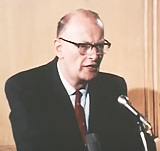 Arthur C. Clarke Arthur C. Clarke
Arthur C. Clarke (December 16, 1917 - March 19, 2008) was a British science fiction
writer, inventor, and futurist. He is best known for his novel "2001: A Space Odyssey."
Clarke was interested in science and technology from a young age, and studied mathematics
and physics at King's College London. During World War II, he served in the Royal
Air Force as a radar specialist.
In addition to his writing, Clarke was interested in space exploration and technology.
He wrote non-fiction books about space and was a popular commentator on space-related
issues. He also made several predictions about the future of technology that proved
to be remarkably accurate, such as the use of geostationary satellites for telecommunications.
Clarke was a fellow of the Royal Astronomical Society and received many awards
for his work, including the Nebula Award, the Hugo Award, and the Bram Stoker Award.
He was also knighted in 1998 for his contributions to literature and science.
Arthur C. Clarke is credited with proposing the idea of geostationary satellites
in a paper he published in the October 1945 issue of Wireless World magazine.
Titled "Extra-Terrestrial
Relays: Can Rocket Stations Give Worldwide Radio Coverage?," he described the
concept of using a network of geostationary satellites to provide global radio coverage.
At the time, there were no practical means of achieving this, but Clarke's vision
inspired scientists and engineers to develop the technology needed to make it a
reality. Geostationary satellites are satellites that orbit the Earth at the same
rate as the Earth rotates, so they appear to stay in the same place in the sky relative
to a fixed point on the Earth's surface. This makes them ideal for telecommunications
and broadcasting, as they can provide constant coverage of a particular area without
the need for multiple satellites or complicated ground infrastructure. In his novel
"The Fountains of Paradise," Clarke proposed
the idea of a "space elevator," a structure that could transport people and cargo
from Earth's surface to space using a cable.
- See Full List -
 Sidney Darlington Sidney Darlington
Sidney Darlington was born on July 18, 1906, in Pittsburgh, Pennsylvania,
USA. He showed an early aptitude for mathematics and engineering, leading him to
pursue higher education in these fields. Darlington attended the prestigious
Harvard University, where he earned his Bachelor of Arts (B.A.) in 1928.
Following his undergraduate studies, he continued his education at the
Massachusetts Institute of Technology (MIT), earning a Master of Science (M.S.)
in 1932. Career and Contributions Sidney Darlington's career was marked by his
significant contributions to electrical engineering and telecommunications. He
joined Bell Telephone Laboratories, where he worked for the majority of his
professional life. At Bell Labs, Darlington became known for his innovative work
on filter design and circuit theory. One of his most notable contributions was
the invention of the "Darlington Pair" in 1953. The Darlington Pair is a
configuration of two bipolar transistors that allow a higher current gain than a
single transistor alone. This invention had a profound impact on the development
of electronic circuits and is widely used in various applications, from audio
amplifiers to power regulators. In addition to the Darlington Pair, he made
significant contributions to the development of early transistor technology. His
work helped to lay the foundation for modern electronics, playing a crucial role
in the transition from vacuum tubes to solid-state devices. Awards and
Recognition Sidney Darlington's pioneering work earned him numerous accolades
throughout his career. He was elected to the National Academy of Engineering in
recognition of his outstanding contributions to the field. He also received
several prestigious awards, including the IEEE Edison Medal in 1975, which is
one of the highest honors in the field of electrical engineering. Later Life and
Legacy Darlington continued to work and innovate throughout his life, leaving a
lasting legacy in the field of electrical engineering. His contributions to
transistor technology and circuit design remain fundamental to the electronics
that power modern society. Sidney Darlington passed away on October 31, 1997,
but his legacy lives on through the widespread use of his inventions and the
impact they have had on technology and telecommunications. His work continues to
be studied and applied by engineers and researchers worldwide. Personal Life
While Darlington was highly dedicated to his work, he also maintained a rich
personal life. He was known for his intellectual curiosity and passion for
teaching and mentoring young engineers. His contributions to the field are
remembered not only for their technical brilliance but also for the inspiration
they provided to future generations of engineers.
- See Full List -
 Lee De Forest Lee De Forest
Lee de Forest was an American inventor and physicist who is widely recognized
as a pioneer in the field of radio and electronic communication. He was born on
August 26, 1873, in Council Bluffs, Iowa, and grew up in Alabama. BTW, the
correct spelling per his own signature (see cover at left) is "de Forest," not
"De Forest," "deForest," or "DeForest."
De Forest was educated at the Sheffield Scientific School at Yale University,
where he studied under the famous physicist J.W. Gibbs. He later earned a Ph.D.
in physics from the University of Berlin, where he studied under the renowned physicist
Max Planck.
In 1906, de Forest invented the triode vacuum tube, which allowed electronic signals
to be amplified and helped to revolutionize the field of radio communication. He
later developed other important electronic devices, including the Audion, a vacuum
tube that could detect radio signals, and the oscillating audion, which was used
in early radio transmitters.
The audio tube that Lee de Forest invented is known as the triode vacuum tube,
also called the Audion. The triode was a significant innovation in the field of
electronics because it allowed for the amplification of electronic signals. Prior
to its invention, electronic signals could only be transmitted over short distances
because the signals would quickly weaken and become distorted.
The triode vacuum tube was first introduced by de Forest in 1906, and it was quickly
adopted by radio manufacturers and enthusiasts. The Audion was a three-element vacuum
tube that could amplify radio signals, making it possible to broadcast radio signals
over longer distances than ever before. This made radio broadcasting commercially
viable, and it helped to popularize radio as a means of communication and entertainment.
De Forest continued to work on improving the triode, developing a version that
could be used in early radio transmitters. He also worked on other electronic devices,
including the oscillating audion, which was used to generate radio frequency signals.
The triode vacuum tube had a profound impact on the development of electronics
and communication technology. It laid the groundwork for the development of modern
electronics and helped to pave the way for the development of television, computers,
and other electronic devices. Today, vacuum tubes are no longer commonly used in
electronic devices, having been largely replaced by transistors and integrated circuits,
but they remain an important part of the history of technology.
De Forest was a prolific inventor and held over 180 patents for his work in electronics
and communication. He also worked as a consultant for several major corporations,
including AT&T and RCA.
Lee de Forest was involved in a number of patent lawsuits over the course of his
career. One of the most notable was his dispute with the American Telephone and
Telegraph Company (AT&T) over the patent for the vacuum tube.
In 1915, De Forest filed a patent application for a "wireless telegraphy" system
that used a vacuum tube to amplify signals. However, AT&T claimed that it had
patented a similar device, and a lengthy legal battle ensued.
The lawsuit lasted for over a decade, with both sides presenting numerous technical
arguments and expert witnesses. Ultimately, in 1927, the Supreme Court of the United
States ruled in favor of AT&T, stating that de Forest's vacuum tube was too similar
to AT&T's patented device.
The ruling was a significant blow to De Forest's career, as it limited his ability
to profit from his inventions and prevented him from developing certain technologies.
However, De Forest continued to work as an inventor and consultant, and he made significant
contributions to the development of early television and sound recording technology.
Throughout his career, de Forest was a strong advocate for the development of
radio as a means of communication and entertainment. He gave numerous lectures and
wrote articles and books on the subject, helping to popularize radio and bring it
into the mainstream.
- See Full List -
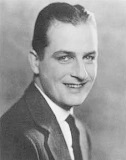 Reginald Denny Reginald Denny
Reginald Denny (November 20, 1891-June 16, 1967) was a man of many talents and
interests. He was born on November 20, 1891, in England, and grew up to become an
actor, aviator, and airplane designer. Denny began his career in show business working
with a stage group and later toured parts of the world in his early 20s.
During World War I, Denny served as an aviator with the Royal Air Force. He resumed
his acting career when the war ended, but he also kept up with his airplane passion.
He moved to Hollywood to work in the film industry and opened a model store called
"Reginald Denny's Hobby Shop."
In the 1930s, Denny's model kit, the Denny Jr., became very popular. His company,
Reginald Denny Industries, also produced Dennymite engines that were frequently
used by modelers, as well as Jimmie Allen kits and other kits for children.
During World War II, Denny's company made RC target drones for the military,
called Radioplanes. Norma Jeane Mortenson, who later became famous as Marilyn Monroe,
worked on building these planes in the shop and was "discovered" there.
- See Full List -
 Thomas Alva Edison Thomas Alva Edison
Thomas Alva Edison (1847-1931) was an American inventor and businessman who
made significant contributions to various fields, particularly in the realm of
electrical engineering. He is widely regarded as one of the most influential
inventors in history and held over a thousand patents for his inventions and
innovations.
Edison was born on February 11, 1847, in Milan, Ohio, United States. Despite
receiving only a few months of formal education, he was a voracious reader and
had a keen curiosity for science and technology from a young age. Edison's early
experiences in telegraphy and chemistry laid the groundwork for his future
inventions.
One of Edison's most notable achievements was the development of practical
and commercially viable electric lighting. He is credited with inventing the
incandescent light bulb, which revolutionized the way people lived and worked by
providing a safe and efficient alternative to gas and oil lamps. Edison's
extensive research and experimentation with various filament materials
eventually led to the creation of a long-lasting and practical electric light
bulb.
Apart from lighting, Edison made significant contributions to the advancement
of electrical power distribution. He established the first investor-owned
electric utility company in the United States, the Edison Electric Illuminating
Company, which brought electricity to homes and businesses in New York City.
In addition to his work in the field of electricity, Edison also invented or
greatly improved upon numerous other devices and technologies. Some of his
notable inventions include the phonograph, a device for recording and
reproducing sound, the motion picture camera, and the alkaline storage battery.
His inventions had a profound impact on communication, entertainment, and
transportation industries.
Edison's approach to invention was characterized by relentless
experimentation and iterative improvement. He famously said, "Genius is one
percent inspiration, ninety-nine percent perspiration," emphasizing the
importance of hard work and perseverance in the process of innovation.
Thomas Edison's contributions to science and technology earned him widespread
recognition and acclaim during his lifetime. He received numerous awards and
honors, including the Congressional Gold Medal and membership in the National
Academy of Sciences. Edison continued to work on various projects until his
death on October 18, 1931, in West Orange, New Jersey.
Today, Thomas Edison's legacy lives on as his inventions and innovations
continue to shape the modern world. His entrepreneurial spirit and dedication to
practical problem-solving have inspired generations of inventors and innovators,
and his name remains synonymous with ingenuity and creativity.
- See Full List -
 Michael Faraday Michael Faraday
Michael Faraday (1791–1867) was a British physicist and chemist who made
significant contributions to the fields of electromagnetism and
electrochemistry. Born in London, Faraday came from a humble background and
received only basic formal education. However, his insatiable curiosity and keen
observational skills led him to become one of the most influential scientists of
the 19th century. Faraday's contributions to science and his dedication to
advancing knowledge earned him numerous accolades and honors, including the
Royal Society's Copley Medal and the presidency of the British Association for
the Advancement of Science.
Faraday began his career as a chemist's apprentice and later became an
assistant to Humphry Davy, a renowned chemist at the Royal Institution in
London. Under Davy's mentorship, Faraday made crucial discoveries in chemistry,
particularly in the realms of electrolysis and electrochemistry.
Faraday's most notable contributions lie in the field of electromagnetism. He
formulated the concept of electromagnetic fields, introducing the idea that
electric and magnetic phenomena are closely related. His groundbreaking
experiments demonstrated electromagnetic induction, the principle behind the
operation of electric generators and transformers. Faraday's work laid the
foundation for James Clerk Maxwell's electromagnetic theory, which later became
one of the cornerstones of modern physics.
Among Faraday's notable achievements are:
Faraday's Law of Electromagnetic Induction: This law states that a changing
magnetic field induces an electromotive force (EMF) in a closed circuit.
Faraday's Laws of Electrolysis: Faraday discovered the quantitative
relationships governing the electrolysis of chemical compounds, which laid the
groundwork for understanding the fundamental laws of electrochemistry.
Invention of the Faraday Cage: Faraday designed a conductive enclosure that
shields its interior from external electric fields. This invention has numerous
practical applications, including protecting sensitive electronic equipment from
electromagnetic interference.
Faraday's legacy extends beyond his scientific discoveries. He was an
excellent communicator and lecturer, renowned for his ability to explain complex
scientific concepts in simple terms. Faraday's lectures at the Royal Institution
attracted large audiences and played a crucial role in popularizing science
among the general public.
- See Full List -
 Philo T. Farnsworth Philo T. Farnsworth
Philo
T. Farnsworth, born on August 19, 1906, and passed away on March 11, 1971,
was an American inventor and television pioneer. He is best known for inventing
the first fully electronic television system.
Farnsworth was born in Beaver, Utah, and grew up on a farm. As a teenager, he
became interested in electronics and engineering. In 1927, at the age of 21, Farnsworth
successfully transmitted the first image using his electronic television system.
He achieved this breakthrough while working in a small laboratory in San Francisco.
Farnsworth's invention used a scanning system that used an electron beam to capture
and display images. This concept formed the basis of modern television technology.
He patented his television system in 1927 and continued to develop and refine it
in the following years.
In 1930, Farnsworth demonstrated his television system to the press and the public,
which led to increased interest in the new technology. He formed the Farnsworth
Television and Radio Corporation to further develop and manufacture television sets.
Despite his significant contributions to television technology, Farnsworth faced
challenges in the form of patent disputes. RCA, a major electronics company at the
time, challenged Farnsworth's patents and engaged in legal battles. However, Farnsworth
ultimately prevailed, and his patents were upheld.
Throughout his career, Farnsworth received over 300 patents for various inventions,
including the dissector tube (an early version of the cathode-ray tube) and the
infrared telescope. His work laid the foundation for the television industry, which
went on to revolutionize entertainment, communication, and the dissemination of
information.
Philo Farnsworth's contributions to the field of television technology earned
him numerous accolades. He received the Franklin Institute's Franklin Medal in 1957,
and in 1999, he was posthumously awarded the National Medal of Technology and Innovation
by the United States government.
Philo Farnsworth's legacy as a television pioneer is celebrated today, and his
inventions continue to shape the way we experience and interact with media.
- See Full List -
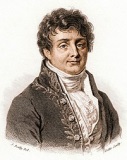 Jean-Baptiste Joseph Fourier Jean-Baptiste Joseph Fourier
Jean-Baptiste Joseph Fourier (1768-1830) was a French mathematician and physicist
known for his significant contributions to the fields of mathematics and heat transfer.
He is best remembered for his work on the mathematical analysis of heat flow, which
led to the development of Fourier series and the Fourier transform.
Fourier was born in Auxerre, France, on March 21, 1768. He initially studied
at the Benedictine Abbey of Saint-Bénigne in Dijon and later attended the École
Royale Militaire in Paris. After completing his education, Fourier joined the French
Revolutionary Army as an artillery officer.
During his military service, Fourier's talents in mathematics and science were
recognized, and he was appointed to the scientific committee of the Egyptian expedition
led by Napoleon Bonaparte in 1798. Fourier's time in Egypt allowed him to study
and analyze various natural phenomena, including the behavior of heat.
Upon his return to France, Fourier pursued an academic career and was appointed
professor of mathematical physics at the newly established École Normale Supérieure
in Paris. It was during this time that he began his groundbreaking work on heat
conduction.
Fourier's most influential contribution was the development of Fourier series.
He demonstrated that any periodic function could be expressed as a sum of sine and
cosine functions, providing a powerful tool for analyzing periodic phenomena. Fourier
series had a profound impact on various fields, including mathematics, physics,
engineering, and signal processing.
Furthermore, Fourier introduced the concept of the Fourier transform, which extends
the idea of Fourier series to non-periodic functions. The Fourier transform is a
mathematical technique used to decompose a function into its frequency components
and has widespread applications in areas such as image processing, data analysis,
and signal modulation.
Fourier's work revolutionized the understanding of heat transfer and the mathematical
analysis of periodic and non-periodic functions. His ideas laid the foundation for
the field of harmonic analysis and significantly influenced numerous branches of
science and engineering.
Jean-Baptiste Joseph Fourier died on May 16, 1830, in Paris, leaving behind a
lasting legacy as one of the greatest mathematicians and physicists of his time.
His work continues to be studied and applied by scientists and engineers to this
day.
- See Full List -
 Yuri Gagarin Yuri Gagarin
Yuri Gagarin was a Soviet cosmonaut who became the first human to travel into
space.
Yuri Gagarin was born on March 9, 1934, in the village of Klushino, Russia. He
joined the Soviet Air Force in 1955 and began his training as a pilot. Gagarin was
selected as one of the first group of cosmonauts for the Soviet space program in
1960. He was chosen for his excellent piloting skills and physical fitness. Orbit
Duration:
Yuri Gagarin's historic orbit on April 12, 1961 aboard Vostok 1, a spherical
capsule with a diameter of approximately 2.3 meters (7.5 feet), lasted approximately
108 minutes. During this time, he completed one orbit around the Earth. Vostok 1
reached a maximum altitude of approximately 327 kilometers (203 miles) above the
Earth's surface during the mission.
After completing his orbit, Vostok 1 re-entered Earth's atmosphere. The
descent module containing Gagarin separated from the orbital module. Gagarin ejected
from the descent module at an altitude of about 7 kilometers (4.3 miles) to ensure
his safe landing. He then descended to Earth under a separate parachute.
The descent module of Vostok 1 was equipped with a specialized parachute
system to ensure a safe landing for Yuri Gagarin. This system included both a main
parachute and a reserve parachute to provide redundancy in case of any issues with
the primary parachute. Yuri Gagarin's mission aboard Vostok 1 was a historic
achievement that demonstrated the capabilities of human spaceflight. His successful
journey into space and safe return to Earth made him an iconic figure in the history
of space exploration.
- See Full List -
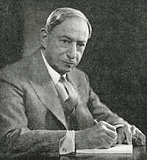 Hugo Gernsback Hugo Gernsback
Hugo Gernsback (1884-1967) was a Luxembourgish-American inventor, writer, editor,
and publisher who is often referred to as the "Father of Science Fiction." He founded
several influential science fiction magazines, including "Amazing Stories," which
was the first magazine devoted solely to science fiction.
In addition to his work in science fiction, Gernsback was also an inventor and
entrepreneur. He was awarded many patents, including patents for early television
systems, and founded several companies, including the Gernsback Publications, which
published a variety of magazines.
Gernsback was a prolific writer, and he authored many science fiction stories
and novels. He also wrote about science and technology in non-fiction works, including
his popular book "The Radio Amateur's Handbook."
Today, Gernsback's legacy as a pioneer in the field of science fiction continues
to influence writers and readers alike. The Hugo Awards, which are given annually
to the best works of science fiction and fantasy, are named in his honor.
Hugo Gernsback's technical magazines included
Electrical Experimenter,
Modern Electrics,
Radio Craft,
Radio-Electronics,
and
Electronics
World.
- See Full List -
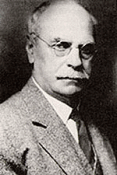 Edwin Hall Edwin Hall
Edwin Herbert Hall was an American physicist known for his discovery of the
Hall effect,
which has had significant implications in the field of solid-state physics and
electronics. Edwin Hall was born on November 7, 1855, in Great Falls, New
Hampshire, USA. He attended Phillips Exeter Academy and later enrolled at
Harvard University, where he pursued a bachelor's degree in physics. Hall passed
away on November 20, 1938. He was recognized for his contributions to physics,
and received many honors and awards.
In 1879, while still an undergraduate student at Harvard, Hall made a
groundbreaking discovery that would later be known as the Hall effect. He was
conducting experiments to better understand the behavior of electrical currents
in the presence of magnetic fields when he observed that a voltage developed
perpendicular to both the direction of current flow and the applied magnetic
field. This phenomenon came to be known as the Hall effect, and Hall published
his findings in a paper titled "On a New Action of the Magnet on Electric
Currents."
After completing his undergraduate studies, Hall pursued further education
and earned his Ph.D. from Harvard University in 1880. He then embarked on an
academic career, teaching and conducting research. He held positions at several
institutions, including Harvard University, where he was an assistant professor
of physics.
Edwin Hall's discovery of the Hall effect had significant implications
for the field of solid-state physics. The Hall effect is a crucial tool for
studying the electrical properties of materials and has numerous practical
applications. Hall's work laid the foundation for future research in
semiconductor physics and the development of modern electronic devices.
- See Full List -
 David Edward Hughes David Edward Hughes
David Edward Hughes (1831-1900) was a British-American inventor and professor
who made significant contributions to the fields of telegraphy and telephony. He
was born on May 16, 1831, in London, England.
Hughes began his career as a musician, playing the cello in various orchestras
and theaters in London. However, he had a keen interest in science and technology,
which eventually led him to pursue inventions related to telegraphy.
In 1855, Hughes invented a printing telegraph, a device that could transmit messages
over long distances using a combination of a keyboard and a printing mechanism.
His telegraph was a significant improvement over previous designs because it could
print messages directly onto paper, eliminating the need for a human operator to
transcribe the received signals.
Another notable invention by Hughes was the carbon microphone, which he patented
in 1878. The carbon microphone was a fundamental component in early telephony and
broadcasting systems. It utilized the varying resistance of carbon particles under
pressure to convert sound waves into electrical signals. The carbon microphone was
widely used for many years and played a crucial role in the development of the telephone
and later communication technologies.
In addition to his inventions, Hughes conducted experiments in the field of electricity
and made important discoveries. One notable achievement was his observation of the
"spark" or "arc" that occurred when two carbon electrodes in a circuit were separated.
This phenomenon, later known as the "Hughes effect," had implications for the development
of electric lighting and the study of electric arcs.
David Edward Hughes received numerous honors during his lifetime for his contributions
to science and technology. He was a member of the Royal Society and was awarded
the prestigious Hughes Medal by the Royal Society in 1885. Hughes passed away on
January 22, 1900, in London, leaving behind a legacy of innovation and discoveries
that influenced the development of modern communication systems.
- See Full List -
 Arthur Atwater Kent Arthur Atwater Kent
Atwater Kent was an American inventor, entrepreneur and manufacturer of radio
equipment. He was born on December 12, 1873, in Cassopolis, Michigan and died on
August 30, 1949, in Philadelphia, Pennsylvania. He was a pioneer in the
development of radio technology and his impact on the industry is still felt
today.
Kent began his career as an electrical engineer, working for various
companies before starting his own business in 1918. He founded the Atwater Kent
Manufacturing Company in Philadelphia, Pennsylvania, with the goal of producing
high-quality radio sets for the public. The company quickly became one of the
largest radio manufacturers in the United States, producing over one million
radio sets between the 1920s and 1930s.
One of Kent's innovations was the development of the "breadboard" radio set,
which was easy to assemble and repair. He also made use of more efficient
components, such as high-voltage power supplies, which allowed his radio sets to
produce better sound quality. His radios were also known for their beautiful
wooden cabinets, which were handcrafted and came in a variety of styles and
finishes to suit any decor.
Atwater Kent was a visionary who understood the potential of radio as a means
of communication and entertainment. He was an advocate for the development of
commercial radio broadcasting and he supported the establishment of the National
Broadcasting Company (NBC) in 1926. This network helped to bring radio to a
wider audience and it was a major factor in the growth of the radio industry.
In addition to his contributions to the radio industry, Kent was also a
philanthropist. He supported a number of educational and scientific
organizations, including the Franklin Institute, and he established the Atwater
Kent Foundation, which provided grants for scientific research.
- See Full List -
 Jack Kilby Jack Kilby
Jack St. Clair Kilby was born on November 8, 1923, in Jefferson City, Missouri,
USA. He grew up in Great Bend, Kansas, where his father managed a small electric
company. Kilby's interest in electronics was evident from a young age, and he spent
much of his youth tinkering with radios and other electronic devices. Kilby attended
the University of Illinois at Urbana-Champaign, where he earned a Bachelor of Science
degree in Electrical Engineering in 1947. His education was interrupted by his service
in the United States Army during World War II, where he worked with radio technology.
Following the war, Kilby completed his degree and later pursued graduate studies
at the University of Wisconsin-Milwaukee, where he received a Master's degree in
Electrical Engineering in 1950.
 Jack Kilby's professional career took a
significant turn when he joined Texas Instruments (TI) in 1958. At that time, TI
was a growing company focusing on semiconductor technology. Kilby's initial role
involved working on miniaturizing electronic components, a pressing challenge in
the industry. Invention of the Integrated Circuit In the summer of 1958, while most
of his colleagues were on vacation, Kilby made a breakthrough that would revolutionize
electronics. He developed the concept of the integrated circuit, which combined
all the components of a circuit - resistors, capacitors, and transistors - into
a single piece of semiconductor material. On September 12, 1958, Kilby demonstrated
the first working integrated circuit to his supervisors at TI. This invention drastically
reduced the size and cost of electronic devices, paving the way for modern electronics,
including computers, smartphones, and a myriad of other digital devices. L Jack Kilby's professional career took a
significant turn when he joined Texas Instruments (TI) in 1958. At that time, TI
was a growing company focusing on semiconductor technology. Kilby's initial role
involved working on miniaturizing electronic components, a pressing challenge in
the industry. Invention of the Integrated Circuit In the summer of 1958, while most
of his colleagues were on vacation, Kilby made a breakthrough that would revolutionize
electronics. He developed the concept of the integrated circuit, which combined
all the components of a circuit - resistors, capacitors, and transistors - into
a single piece of semiconductor material. On September 12, 1958, Kilby demonstrated
the first working integrated circuit to his supervisors at TI. This invention drastically
reduced the size and cost of electronic devices, paving the way for modern electronics,
including computers, smartphones, and a myriad of other digital devices. L
Kilby's contributions to technology extended beyond the integrated circuit. He
worked on various other projects at Texas Instruments, including the development
of the thermal printer and contributions to military and commercial electronic systems.
His work on the handheld calculator in the late 1960s further showcased his innovative
spirit, leading to the creation of devices that have become ubiquitous in everyday
life. Recognition and Awards Jack Kilby's pioneering work earned him numerous accolades
and honors throughout his career. In 1982, he was awarded the IEEE Medal of Honor,
one of the highest distinctions in the field of electrical engineering. In 2000,
Kilby was awarded the Nobel Prize in Physics for his part in the invention of the
integrated circuit. This recognition underscored the profound impact of his work
on modern technology. Kilby was also inducted into several halls of fame, including
the National Inventors Hall of Fame and the Consumer Electronics Hall of Fame. He
held over 60 patents, reflecting his prolific contributions to the field of electronics.
Jack Kilby passed away on June 20, 2005, in Dallas, Texas.
- See Full List -
 Gustav Kirchhoff Gustav Kirchhoff
Gustav Kirchhoff was a German physicist born on March 12, 1824, in Königsberg,
Prussia (now Kaliningrad, Russia). He is best known for his pioneering work in the
field of electrical circuits and spectroscopy, which laid the foundation for modern
physics and electrical engineering.
Kirchhoff's most significant contributions include the formulation of Kirchhoff's
laws, which are fundamental principles governing the behavior of electrical circuits.
These laws are essential for analyzing complex circuits and are widely used in electrical
engineering.
In addition to his work in electricity, Kirchhoff made groundbreaking contributions
to spectroscopy, the study of the interaction between matter and electromagnetic
radiation. He formulated Kirchhoff's laws of spectroscopy, which describe the relationship
between the emission and absorption of light by a substance. These laws are fundamental
to understanding the composition and properties of celestial bodies, among other
applications.
Kirchhoff's work in both electricity and spectroscopy earned him widespread recognition
and acclaim within the scientific community. He was appointed as a professor at
various prestigious institutions during his career, including the University of
Berlin and the University of Heidelberg.
Gustav Kirchhoff passed away on October 17, 1887, in Berlin, Germany.
Gustav Kirchhoff formulated two fundamental laws that are essential in the analysis
of electrical circuits: Kirchhoff's Voltage Law (KVL) and Kirchhoff's Current Law
(KCL).
Kirchhoff's Voltage Law (KVL): Kirchhoff's Voltage Law states that the total
voltage around any closed loop in a circuit must sum to zero. In other words, the
algebraic sum of the voltages (potential differences) across all the elements (such
as resistors, capacitors, and inductors) in a closed loop is equal to zero. KVL
is based on the principle of energy conservation in electrical circuits and is widely
used in circuit analysis to determine unknown voltages or currents.
Kirchhoff's Current Law (KCL): Kirchhoff's Current Law states that the algebraic
sum of currents entering and exiting any node (or junction) in an electrical circuit
must be zero. In other words, the total current flowing into a junction is equal
to the total current flowing out of it. KCL is based on the principle of charge
conservation and is crucial for analyzing circuits with multiple current paths.
- See Full List -
Karl Kurz
Karl Kurz, together with Heinrich Barkhausen, discovered the Barkhausen-Kurz
oscillations, also known as the Barkhausen-Kurz effect, in 1919. This effect
refers to the phenomenon of magnetic domain wall motion in ferromagnetic
materials, which produces oscillations in the electrical current passing through
the material.
Kurz also contributed to the development of the Kurz tube, an early type of
vacuum tube that was used in early radio receivers and transmitters. The Kurz
tube was notable for its ability to amplify very high frequencies, making it
useful for early experiments in radio and telecommunications.
Overall, Karl Kurz was a key figure in the early development of electronics
and his contributions to the study of electronic vibrations were significant.
- See Full List -
 Hedy Lamarr Hedy Lamarr
Hedy Lamarr was an Austrian-American actress and inventor who co-invented a
technology known as spread spectrum communications, which is now widely used in
modern communication systems such as Wi-Fi, Bluetooth, and cell phones.
Lamarr, along with her collaborator George Antheil, developed the technology
during World War II as a means of creating secure and unjammable radio
communications for torpedoes. Their invention involved using a frequency-hopping
signal that rapidly switched between different radio frequencies, making it
difficult for enemies to intercept or jam the signal.
In 1942, Lamarr and Antheil were granted a U.S. patent (2,292,387, granted on
August 11, 1942) for their invention,
which they called the "Secret Communication System." However, the technology was
not immediately adopted by the military, and it was not until many years later
that spread spectrum technology became widely used in civilian applications.
- See Full List -
 Sir Oliver Lodge Sir Oliver Lodge
Sir Oliver Lodge (1851-1940) was a British physicist and inventor who made significant
contributions to the fields of electromagnetism, radio communication, and spiritualism.
Born in Staffordshire, England, Lodge was the eldest of twelve children. He attended
University College, London, where he studied physics and mathematics. After completing
his degree, he became a physics lecturer at Bedford College in London and later
at the University of Liverpool.
In the late 1880s and early 1890s, Lodge became interested in wireless telegraphy,
the transmission of messages over long distances using electromagnetic waves. He
conducted experiments using radio waves and developed a prototype of a radio receiver.
Oliver Lodge made significant contributions to the field of electromagnetic waves
and communication. He is best known for his work on the development of the waveguide,
which is a hollow metal tube used to guide electromagnetic waves at high frequencies.
In 1894, Lodge introduced the concept of using a hollow tube to guide electromagnetic
waves in a paper titled "On the Propagation of Electric Waves along Wires". He proposed
the use of a cylindrical metal tube to guide high-frequency electromagnetic waves,
such as those used in wireless telegraphy, instead of the traditional wire antennas.
Lodge's waveguide design was a significant improvement over previous methods
of transmitting electromagnetic waves. The waveguide was able to guide the waves
with less loss and dispersion, resulting in a more efficient and reliable transmission
of signals over long distances.
Lodge's work on the waveguide paved the way for many important developments in
the field of electromagnetic waves and communication, including the development
of microwave technology and the design of radar systems. Today, waveguides are widely
used in a variety of applications, including satellite communication, radar systems,
and microwave ovens.
During World War I, Lodge worked on developing a form of underwater communication
using electromagnetic waves. He also helped to design a listening device used to
detect submarines.
Lodge was a Fellow of the Royal Society and served as its president from 1920
to 1925. He was knighted in 1902 for his contributions to science.
In addition to his work in physics, Lodge was also interested in spiritualism,
the belief in communication with the dead. He attended séances and claimed to have
communicated with his deceased son, Raymond. He wrote several books on the subject,
including "The Survival of Man" (1909).
Sir Oliver Lodge died in 1940 at the age of 89. He is remembered as a pioneering
physicist and inventor who made significant contributions to the development of
wireless telegraphy and electromagnetic theory.
- See Full List -
 Guglielmo Marconi Guglielmo Marconi
Guglielmo Marconi (1874-1937) was an Italian inventor and electrical engineer
known for his pioneering work in the field of wireless telecommunication. He is
widely regarded as the father of wireless communication and is credited with the
development and commercialization of radio technology.
Marconi was born on April 25, 1874, in Bologna, Italy. He came from a family
of Italian nobility, and his interest in science and technology was nurtured from
an early age. Marconi's experiments with electricity and telegraphy led him to develop
a keen interest in wireless communication.
In the late 19th century, Marconi focused on developing a practical system for
wireless telegraphy. He conducted extensive experiments and built upon the work
of previous inventors, such as James Clerk Maxwell and Heinrich Hertz, to refine
his ideas. In 1895, at the age of 21, Marconi successfully sent wireless signals
over a distance of one and a half miles.
Marconi's most significant achievement came in 1901 when he successfully transmitted
the first transatlantic wireless signal. Using a high-power transmitter and a kite-supported
antenna system in Newfoundland, Canada, Marconi received radio signals sent from
Poldhu, Cornwall, in the United Kingdom. This achievement marked a major milestone
in global communication and demonstrated the potential of wireless telegraphy for
long-distance communication.
Building upon his success, Marconi founded the Marconi Company (later known as
Marconi's Wireless Telegraph Company) to commercialize and expand the use of his
wireless telegraphy technology. His company played a crucial role in the development
of wireless communication systems, including ship-to-shore communication and maritime
distress signals.
Marconi's contributions to wireless communication earned him widespread recognition
and numerous accolades. He received the Nobel Prize in Physics in 1909, becoming
the first Italian Nobel laureate. Marconi also received honorary degrees from various
universities and was appointed a Knight Grand Cross of the Order of the British
Empire.
Throughout his career, Marconi continued to innovate and improve wireless communication
technology. He worked on advancements such as beam antennas, shortwave radio, and
even early experiments with wireless telephony (voice transmission).
Guglielmo Marconi died on July 20, 1937, in Rome, Italy, leaving behind a remarkable
legacy. His pioneering work in wireless communication laid the foundation for modern
radio, television, and other wireless technologies. Today, his name is synonymous
with the development of wireless communication systems, and his inventions continue
to shape the way we communicate and connect with each other globally.
- See Full List -
 Gordon Moore Gordon Moore
Gordon Moore (January 3, 1929 - March 24, 2023) is an American businessman, engineer,
and co-founder of Intel Corporation. He is also known for his contribution to the
development of the semiconductor industry and for Moore's Law, which predicts the
doubling of the number of transistors on a microchip every two years.
Moore was born on January 3, 1929, in San Francisco, California. He grew up in
nearby Pescadero, a small town on the coast. His parents were modest farmers, and
his father was also a handyman who repaired various mechanical and electrical devices.
From a young age, Moore showed a keen interest in science and technology, often
tinkering with his father's tools and gadgets.
Moore attended Sequoia High School in Redwood City, where he excelled in mathematics
and science. He also developed an interest in electronics and built his first radio
at the age of 13. After high school, Moore enrolled at San Jose State University
to study chemistry, but later switched to physics.
In 1950, Moore received his Ph.D. in physics from the California Institute of
Technology (Caltech). He then joined the Applied Physics Laboratory at Johns Hopkins
University, where he worked on the development of high-frequency radar systems for
the U.S. Navy. In 1956, Moore joined Shockley Semiconductor Laboratory, a division
of Bell Labs, in Mountain View, California.
At Shockley, Moore worked on the development of silicon-based transistors, which
were faster and more reliable than the existing germanium-based transistors. In
1957, Moore and six other researchers left Shockley to form Fairchild Semiconductor,
a company that would become one of the pioneers of the semiconductor industry.
At Fairchild, Moore worked on the development of integrated circuits, which combined
multiple transistors on a single chip. In 1968, he co-founded Intel Corporation
with Robert Noyce, another Fairchild veteran. At Intel, Moore served as the executive
vice president and played a key role in the development of the microprocessor, a
device that would revolutionize the computer industry.
In 1975, Moore published his famous article, "The Intel 8080 Microprocessor and
the MCS-80 Family", in which he predicted that the number of transistors on a microchip
would double every two years, leading to exponential growth in computing power.
This prediction, known as Moore's Law, has proven remarkably accurate over the past
several decades and has become a guiding principle of the technology industry.
Moore retired from Intel in 1997 but has remained active in the field of science
and technology. He has received numerous honors and awards, including the National
Medal of Technology and Innovation in 1990 and the Presidential Medal of Freedom
in 2002. Today, Gordon Moore is widely recognized as one of the most influential
figures in the history of the semiconductor industry.
- See Full List -
 Robert Noyce Robert Noyce
Robert Noyce, a trailblazer in the field of electronics, made significant contributions
that forever changed the landscape of technology. Born on December 12, 1927, in
Burlington, Iowa, Noyce exhibited a keen intellect and a passion for science from
an early age. His academic journey began at Grinnell College in Iowa, where he earned
a bachelor's degree in physics and mathematics in 1949. Demonstrating exceptional
promise, he went on to earn a Ph.D. in physics from the Massachusetts Institute
of Technology (MIT) in 1953. At MIT, Noyce was influenced by the leading minds in
physics and engineering, which honed his skills and set the stage for his future
innovations.
Noyce's professional life took a pivotal turn when he joined the Shockley Semiconductor
Laboratory, founded by Nobel laureate William Shockley, in 1956. However, tensions
within the company led Noyce and seven colleagues, famously known as the "Traitorous
Eight," to leave and co-found Fairchild Semiconductor in 1957. At Fairchild, Noyce's
ingenuity came to the forefront with his co-invention of the integrated circuit
in 1959, independently developed around the same time by Jack Kilby at Texas Instruments.
Noyce's version of the integrated circuit used silicon as the base material, which
proved to be more practical for mass production compared to Kilby's germanium-based
design. This breakthrough allowed multiple electronic components to be integrated
onto a single chip, drastically reducing the size and cost of electronic devices
and paving the way for the development of modern computers and various other electronic
applications.
In 1968, Noyce, along with Gordon Moore, left Fairchild to establish Intel Corporation.
Under their leadership, Intel introduced the world's first commercial microprocessor
in 1971, a monumental achievement that further solidified Noyce's status as a key
architect of the digital age. The microprocessor's ability to perform multiple functions
on a single chip revolutionized computing and laid the foundation for the personal
computer revolution. Beyond his technical contributions, Noyce was celebrated for
his leadership style, which emphasized a collaborative and egalitarian workplace
culture. He encouraged creativity and innovation, which became hallmarks of Silicon
Valley's ethos.
Throughout his career, Noyce received numerous honors, including the National
Medal of Science in 1979, recognizing his contributions to technology and his impact
on society. His personal qualities of humility, vision, and a commitment to fostering
talent left an indelible mark on those who worked with him. Robert Noyce's legacy
extends far beyond his inventions; he is remembered as a visionary who not only
transformed the electronics industry but also inspired a generation of innovators
and entrepreneurs. He passed away on June 3, 1990, but his influence endures in
the digital world he helped create.
- See Full List -
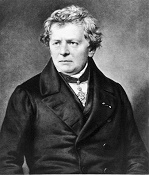 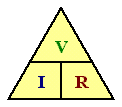 Georg Simon Ohm Georg Simon Ohm
Georg Simon Ohm was a German physicist and mathematician best known for his
work in the field of electricity and the formulation of Ohm's Law. Ohm was born on March 16, 1789, in Erlangen, Bavaria, which is
now part of Germany. He came from a family of master craftsmen, and his father,
Johann Wolfgang Ohm, was a master locksmith.
Ohm began his education at the University of Erlangen in 1805, initially
studying theology but soon switching to mathematics and physics. He faced
financial difficulties during his studies, which led him to take on the role of
a private tutor to support himself. In 1827, Georg Simon Ohm became a high
school teacher in Cologne, where he taught mathematics and physics. It was
during his teaching career that he conducted experiments and research related to
electricity, leading to his groundbreaking work.
Ohm's most significant contribution to science and engineering came in 1827 when he published a
groundbreaking paper titled "Die galvanische Kette, mathematisch bearbeitet"
(The Galvanic Circuit Investigated Mathematically). In this work, he introduced
what would come to be known as "Ohm's Law," which established the fundamental relationship between voltage (V),
current (I), and resistance (R) in an electrical circuit. The law is expressed
as V = I * R. Initially, his work was met with skepticism and rejection, but it
would later become a cornerstone of electrical theory.
Despite initial setbacks, Ohm's work gained recognition, and he was
eventually appointed as a professor at the University of Munich in 1852. In
1841, Ohm was awarded the prestigious Copley Medal by the Royal Society of
London for his contributions to science. Georg Simon Ohm continued his research
and teaching until his retirement and passed away on July 6, 1854, in Munich,
Germany. The unit of electrical resistance,
the ohm (Ω), is named in his honor.
- See Full List -
 J. Robert
Oppenheimer J. Robert
Oppenheimer
J. Robert Oppenheimer (1904-1967) was an American theoretical physicist and one
of the key scientists involved in the development of the atomic bomb during World
War II. He was born in New York City and studied at Harvard University and the University
of Cambridge before joining the faculty at the University of California, Berkeley.
During World War II, Oppenheimer was recruited to work on the Manhattan Project,
a top-secret U.S. government program to develop the first nuclear weapons. As the
director of the Los Alamos Laboratory, he oversaw the design and testing of the
bomb, which was eventually dropped on the Japanese cities of Hiroshima and Nagasaki,
leading to Japan's surrender and the end of the war.
Oppenheimer's contributions to the field of physics were numerous and included
groundbreaking work in quantum mechanics, cosmology, and nuclear physics. He was
widely regarded as one of the preeminent physicists of his time and played a central
role in the development of the atomic bomb.
After the war, Oppenheimer became an outspoken opponent of the nuclear arms race
and a leading advocate for arms control and disarmament. He was also involved in
the development of the hydrogen bomb, but later came to regret his involvement in
its creation.
Oppenheimer's political views and associations came under scrutiny during the
anti-communist fervor of the 1950s, and he was ultimately stripped of his security
clearance by the U.S. government. He continued to teach and conduct research, but
his reputation as a scientist was tarnished by the controversy surrounding his security
clearance. Oppenheimer died of throat cancer in 1967.
Robert Oppenheimer was awarded the Fermi Award in 1963 for his contributions
to theoretical physics and his leadership of the Manhattan Project during World
War II. The award citation recognized Oppenheimer's "outstanding contributions to
theoretical physics" and his "leadership and creativity" in directing the development
of the first atomic bomb.
- See Full List -
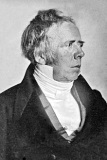 Hans Christian Ørsted Hans Christian Ørsted
Hans Christian Ørsted (1777-1851) was a Danish physicist and chemist who made
significant contributions to the understanding of electromagnetism. He is most famous
for discovering the relationship between electricity and magnetism, which is now
known as Ørsted's law. Ørsted was born in Rudkøbing, Denmark, and received his education
at the University of Copenhagen, where he later became a professor of physics. Throughout
his life, he conducted experiments and research on a variety of scientific topics,
including electricity, magnetism, and chemical reactions.
In 1820, Ørsted made a
groundbreaking discovery that would change the course of physics forever. While
conducting a series of experiments with electricity and magnetism, he noticed that
an electric current flowing through a wire caused a nearby compass needle to deflect.
This was the first experimental evidence of a relationship between electricity and
magnetism, and it provided the foundation for the development of electromagnetism
as a branch of physics. Ørsted's discovery was a crucial step in the development
of electromagnetism, and it paved the way for future scientists such as Michael
Faraday and James Clerk Maxwell to build upon his work and develop a more complete
understanding of the behavior of electric and magnetic fields.
In addition to his
scientific contributions, Ørsted was also a deeply philosophical and humanitarian
individual who believed in the importance of using science for the betterment of
humanity. He was a strong advocate for education and scientific literacy, and he
worked to promote these ideals throughout his life. Hans Christian Ørsted's legacy
lives on through his scientific discoveries and his commitment to using science
to improve the world. Today, he is remembered as one of the founding fathers of
electromagnetism and a pioneer of modern physics.
- See Full List -
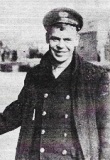 Jack Phillips - Titanic Radio Operator Jack Phillips - Titanic Radio Operator
Jack Phillips, the senior wireless operator aboard the RMS Titanic, played a
crucial role in sending distress signals during the ship's sinking. When the
Titanic struck an iceberg on April 14, 1912, Phillips and his colleague Harold
Bride immediately began transmitting distress signals using Morse code.
Initially, Phillips sent out the distress call "CQD," which was the standard
distress signal at the time. However, he later adopted the newly introduced
distress signal "SOS" (· · · — — — · · ·) as it was more easily recognizable and
understood internationally. The SOS signal was not an abbreviation for any
particular phrase; it was simply chosen for its distinctiveness in Morse code.
Phillips and Bride worked tirelessly to send distress signals and communicate
with other ships in the area. Their efforts helped to alert the RMS Carpathia,
which arrived several hours later to rescue the survivors.
Tragically, both Phillips and Bride remained at their posts until the very
end and did not survive the sinking of the Titanic. Their actions in sending
distress signals and coordinating rescue efforts have been recognized as
instrumental in saving lives and are remembered as acts of heroism.
- See Full List -
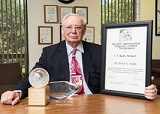 Ulrich L. Rhode Ulrich L. Rhode
Ulrich L. Rhode
is a German amateur radio operator and electronics engineer. He is best known
for his work in the development of high-frequency electronics, and his
contributions to the field of amateur radio. Rhode is the founder and owner of
Rhode & Schwarz, a leading manufacturer of test and measurement equipment,
broadcasting systems, and secure communications technology.
Rhode began his career in electronics in the early 1930s. He worked as a
technician for Telefunken, a leading German electronics company, before joining
the German army during World War II. After the war, Rhode founded his own
company, which would eventually become Rhode & Schwarz. The company quickly
established itself as a leader in the development of high-quality test and
measurement equipment.
As an amateur radio operator, Rohde (N1UL) has made significant contributions
to the field of radio communication. He has been involved in the development of
new technologies and techniques for radio communication, particularly in the
area of microwave and RF circuit design.
Rohde has also been involved in the promotion of amateur radio and the
education of new hams. He has written numerous technical papers and books on
radio communication and has been a speaker at many amateur radio conferences and
events.
In addition to his work in amateur radio, Rohde has had a distinguished
career as an electrical engineer and entrepreneur. He has founded several
successful companies, including Synergy Microwave Corporation, and has held
faculty positions at several universities.
- See Full List -
 Ernest Rutherford Ernest Rutherford
Ernest Rutherford was a New Zealand physicist who is widely considered one of
the most significant scientists of the 20th century. He was born on August 30,
1871, in Nelson, New Zealand, and was the fourth of 12 children in his family.
Rutherford was a brilliant student and received a scholarship to attend
Canterbury College, where he obtained a Bachelor of Arts degree in Mathematics
and Physical Science.
After graduating from college, Rutherford received a scholarship to study at
the University of Cambridge, where he worked under the guidance of J.J. Thomson.
Rutherford's research focused on studying the properties of radiation emitted by
uranium and other radioactive materials. In 1903, he discovered that radiation
consists of three types: alpha particles, beta particles, and gamma rays.
In 1908, Rutherford became the head of the physics department at the
University of Manchester, where he conducted his famous gold foil experiment. In
this experiment, Rutherford fired alpha particles at a thin sheet of gold foil
and observed the pattern of deflection of the particles. The experiment showed
that atoms have a small, positively charged nucleus at their center, which he
called the "atomic nucleus." This discovery revolutionized the field of atomic
physics and earned Rutherford the Nobel Prize in Chemistry in 1908.
Rutherford continued to make important contributions to physics throughout
his career. He discovered and named the proton, which is a subatomic particle
found in the nucleus of an atom. He also proposed the theory of radioactive
decay, which explains how radioactive materials break down over time.
Rutherford's work helped lay the foundation for nuclear physics, which has led
to numerous advancements in science and technology, including the development of
nuclear power.
In addition to his scientific achievements, Rutherford was also known for his
dedication to teaching and mentoring young scientists. Many of his students went
on to become prominent physicists in their own right, including James Chadwick,
who discovered the neutron, and Niels Bohr, who developed the theory of the
structure of the atom.
Ernest Rutherford died on October 19, 1937, at the age of 66. He is
remembered as one of the greatest scientists of all time, and his contributions
to the field of physics continue to be studied and built upon today.
- See Full List -
 David Sarnoff David Sarnoff
David Sarnoff (February 27, 1891 - December 12, 1971) was a
Belarusian-American businessman and pioneer in the field of radio and television
broadcasting. He was born in Uzlyany, a small village in present-day Belarus. He
was the eldest of eight children born to a Jewish family. When he was nine years
old, his family immigrated to the United States and settled in New York City.
As a child, Sarnoff attended school but had to drop out after the sixth grade
to help support his family. He began working as a messenger boy for the
Commercial Cable Company, where he delivered messages by hand between offices in
New York City. He later worked for the American Telephone and Telegraph Company
(AT&T), where he learned about the emerging field of wireless telegraphy.
In 1906, Sarnoff began working as an office boy for the Marconi Wireless
Telegraph Company of America. He quickly impressed his superiors with his
intelligence and work ethic and was promoted to telegraph operator. In this
role, he famously sent the first ever radio message to a ship at sea,
alerting the crew of the sinking of the Titanic, which helped to establish him
as a hero in the eyes of the public.
Sarnoff's early experiences in the telecommunications industry set the stage
for his later success in radio and television. He learned the technical skills
necessary to work with wireless technology and developed an understanding of how
communication networks functioned. These skills and knowledge would prove
invaluable as he rose through the ranks at RCA and helped to shape the future of
the industry.
David Sarnoff began his career with the Radio Corporation of America (RCA) in
1919, shortly after it was formed to take over the assets of the Marconi
Company. Sarnoff was appointed as RCA's general manager, a position he would
hold for many years.
Under Sarnoff's leadership, RCA became a dominant force in the radio
industry. He oversaw the development of the first radio network in the United
States, the National Broadcasting Company (NBC), which was formed in 1926. NBC
grew rapidly, broadcasting news, sports, and entertainment programs to millions
of Americans. Sarnoff also helped to establish the American Broadcasting Company
(ABC) and the Columbia Broadcasting System (CBS), which would become major
players in the radio industry.
Sarnoff was a visionary leader who recognized the potential of radio to bring
people together and to disseminate information and entertainment. He played a
key role in the development of radio technology, overseeing the creation of new
equipment and innovations that improved the quality and reliability of radio
broadcasting.
Sarnoff was also a skilled marketer, using his charisma and public speaking
ability to promote RCA and the radio industry. He believed that radio had the
power to shape public opinion and influence culture, and he used his position to
advance the industry's interests in government and society.
During World War II, David Sarnoff played an important role as a consultant
to the U.S. government. In 1940, he was appointed as the chairman of the
National Defense Research Committee's Subcommittee on Communications, which was
tasked with developing new communication technologies for the military.
Sarnoff worked closely with government officials and military leaders to
develop new communication technologies, including radar and sonar systems, which
helped to give the Allies a significant advantage in the war. He also worked on
the development of the first airborne radar system, which allowed planes to
detect enemy ships and submarines from long distances.
In addition to his work on communication technology, Sarnoff was also
involved in the war effort as a civilian leader. He was a member of the War
Production Board and the National War Fund, and he helped to coordinate the
production of war materials and raise funds for the war effort.
After the war, Sarnoff continued to be involved in government work. He served
on the National Security Resources Board and was appointed by President Harry
Truman as the U.S. representative to the United Nations Atomic Energy
Commission. He also continued to lead RCA and played a key role in the
development of new communication technologies, including color television and
the first communications satellite, Telstar.
Overall, David Sarnoff's contributions during World War II helped to shape
the course of the war and had a lasting impact on communication technology. His
work in government and industry helped to advance American interests and laid
the groundwork for the modern world of communication and technology.
- See Full List -
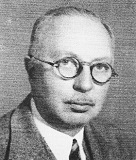 Erwin Schrödinger Erwin Schrödinger
Erwin Schrödinger was an Austrian physicist and one of the founding fathers of
quantum mechanics. He was born on August 12, 1887, in Vienna, Austria, and died
on January 4, 1961, in Vienna as well.
Schrödinger made significant contributions to various areas of theoretical physics,
particularly in the field of quantum mechanics. His most famous contribution is
the development of wave mechanics, also known as Schrödinger's wave equation, which
is a fundamental equation describing the behavior of quantum particles as waves.
In 1933, Schrödinger received the Nobel Prize in Physics, jointly with Paul Dirac,
for the discovery of new productive forms of atomic theory. His work laid the foundation
for understanding the behavior of particles at the microscopic level and contributed
to the establishment of quantum mechanics as a fundamental theory in physics.
Erwin Schrödinger's cat is a thought experiment proposed by Austrian physicist
Erwin Schrödinger in 1935 to illustrate some of the bizarre aspects of quantum mechanics,
specifically the concept of superposition. The experiment involves a hypothetical
cat inside a sealed box along with a radioactive substance, a Geiger counter, and
a vial of poison.
According to quantum mechanics, a particle like a radioactive atom can exist
in a superposition of states, meaning it can be in multiple states simultaneously.
In this case, the radioactive substance can be in a state of both decayed and not
decayed until it is observed.
In Schrödinger's thought experiment, the cat's fate is tied to the radioactive
substance. If the radioactive atom decays, the Geiger counter detects it, triggering
the release of the poison and causing the cat to die. If the atom does not decay,
the cat remains alive.
The peculiar aspect arises when we consider that until the box is opened and
observed, the cat is in a superposition of being both alive and dead, just like
the radioactive atom. In other words, the cat is simultaneously in two contradictory
states. This leads to the famous paradox of Schrödinger's cat, where the cat is
in a superposition of being alive and dead at the same time.
Schrödinger's intention with this thought experiment was to highlight the counterintuitive
nature of quantum mechanics and the challenges it poses in terms of understanding
the behavior of particles at the microscopic level. It was meant to emphasize the
strange implications of superposition and the role of observation in collapsing
quantum states into a definite outcome.
- See Full List -
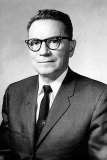 Phillip H. Smith Phillip H. Smith
Phillip H. Smith (April 29, 1905 – August 29, 1987) was an American
electrical engineer who made significant contributions to the field of RF
engineering. He is primarily known for his work on transmission line theory and
impedance matching. Smith's research in the 1930s while working at Bell Labs led
to the development of the
Smith Chart,
which is a graphical representation of complex impedance values.
The Smith Chart is a polar plot that helps engineers analyze and design RF
circuits, such as impedance matching networks and transmission lines. It
provides a visual representation of impedance and reflection coefficient values,
allowing engineers to easily determine the impedance characteristics of a system
and make necessary adjustments to optimize performance.
The Smith Chart has become an essential tool in RF engineering, and it is
widely used in various applications, including antenna design, RF filter design,
and microwave circuit design. It simplifies calculations and provides a
intuitive way to understand and manipulate complex impedance values.
Here is "The Oral
History: Phillip H. Smith," and interview by Engineering and Technology
History Wiki. This January 1939 issue of Electronics magazine might be
the first appearance of the most recognized version of the
Smith Chart.
- See Full List -
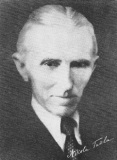 Nikola Tesla Nikola Tesla
Nikola Tesla (1856-1943) was a Serbian-American inventor, electrical engineer,
and physicist who is best known for his contributions to the development of the
modern alternating current (AC) electrical system. Tesla was born in the town of Smiljan in modern-day Croatia, then part of the Austro-Hungarian Empire.
Tesla attended the Austrian Polytechnic in Graz and later studied at the University
of Prague. He immigrated to the United States in 1884 and began working for Thomas
Edison's company, where he developed and improved a number of electrical devices.
However, Tesla and Edison had a falling out, with Tesla resigning in 1885 due to
a disagreement over payment.
Tesla went on to work for several other companies and eventually established
his own laboratory, where he worked on developing his own ideas for electrical devices.
In 1891, he invented the Tesla coil, a high-voltage transformer that is still used
in radio and television technology today.
Tesla also contributed to the development of the AC electrical system, which
is now used to power homes and businesses around the world. He was a fierce competitor
of Edison, who advocated for the use of direct current (DC) electricity instead
of AC. Tesla's AC system won out in the end due to its greater efficiency and the
ability to transmit power over long distances. It epic challenge has been called
"The War of the Currents" or "The
Battle of the Currents."
Tesla held over 300 patents for his inventions, which included the Tesla coil,
the Tesla turbine, and the Tesla oscillator. He was also interested in wireless
communication and developed a system for transmitting messages and power wirelessly
over long distances, but he was unable to secure sufficient funding to continue
developing the technology.
Despite his many contributions to science and technology, Tesla struggled financially
for much of his life and died in relative obscurity in a hotel room in New York
City in 1943. However, his legacy has lived on, and he is now recognized as one
of the most important inventors and scientists of the modern era.
- See Full List -
 Sir Joseph John (J.J.) Thompson Sir Joseph John (J.J.) Thompson
Joseph John Thompson (also known as J.J. Thomson) was a British physicist born
on December 18, 1856, in Cheetham Hill, Manchester, England. He is best known for
his discovery of the electron, for which he was awarded the Nobel Prize in Physics
in 1906.
Thompson studied at Owens College in Manchester and Trinity College, Cambridge,
where he became a fellow in 1884. He held a number of academic positions throughout
his career, including professorships at the University of Cambridge and the Imperial
College of Science and Technology in London.
Thompson's most famous experiment involved the use of a cathode ray tube, which
allowed him to demonstrate the existence of negatively charged particles, which
he called electrons. He also discovered that these particles had a much smaller
mass than previously believed, and he proposed a model of the atom known as the
"plum pudding" model, in which electrons were embedded in a positively charged sphere.
Thompson made many other contributions to the field of physics throughout his
career, including work on the nature of X-rays, the behavior of gases at low pressures,
and the measurement of the charge-to-mass ratio of the electron. He is also credited
for first proposing
waveguide
transmission of electromagnetic waves in a cylindrical metal cavity.
Thompson died on August 30, 1940, in Cambridge, England, at the age of 83. He
is remembered as one of the most important physicists of the late 19th and early
20th centuries, and his work laid the foundation for many later discoveries in the
field of particle physics.
- See Full List -
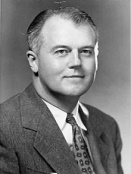 Robert J. Van de Graaff Robert J. Van de Graaff
Robert Jemison Van de Graaff (December 20, 1901 – January 16, 1967) was an
American physicist, inventor, and educator known for his invention of the Van de
Graaff generator, a device that generates high voltages. Born in Tuscaloosa,
Alabama, Van de Graaff showed an early interest in science and engineering.
He earned his bachelor's degree in mechanical engineering from the University
of Alabama in 1922 and went on to pursue graduate studies at Oxford University
as a Rhodes Scholar. He completed his master's degree in engineering at Oxford
in 1923. Later, he earned his Ph.D. in physics from the University of Oxford in
1928, where he studied under physicist J.J. Thomson, the discoverer of the
electron.
Van de Graaff's most significant contribution to science came with his
invention of the Van de Graaff generator in the early 1930s while he was a
professor at Princeton University. This device is capable of producing very high
voltages, often in the millions of volts, by accumulating static electric charge
on a large metal sphere. The generator has been widely used in research
laboratories to accelerate particles for nuclear physics experiments and has
applications in medicine, industry, and education.
During World War II, Van de Graaff worked on radar research at the
Massachusetts Institute of Technology (MIT). After the war, he returned to MIT
and continued his research on high-voltage phenomena. He also contributed to the
development of particle accelerators and nuclear physics.
Throughout his career, Van de Graaff received numerous honors and awards for
his contributions to science and engineering. He was a member of the National
Academy of Sciences and a fellow of the American Academy of Arts and Sciences.
In addition to his scientific work, he was dedicated to science education and
outreach, often giving lectures and demonstrations to inspire young people's
interest in science.
- See Full List -
 Robert Watson-Watt Robert Watson-Watt
Sir Robert Watson-Watt (1892-1973) was a Scottish physicist and inventor who
is best known for his work in the development of radar (Radio Detection and
Ranging) technology during World War II.
Watson-Watt was born in Brechin, Scotland, and grew up in Dundee. He studied
physics at the University of St. Andrews and then worked as a meteorologist for
the British Meteorological Office. In the 1930s, he began researching the use of
radio waves to detect aircraft, in response to a request from the British Air
Ministry for a method to detect enemy planes before they reached British
airspace.
In 1935, Watson-Watt demonstrated a working prototype of his radar system,
which used pulsed radio waves to detect the presence and location of aircraft.
The system was quickly adopted by the British military and played a crucial role
in the defense of Britain during the Battle of Britain in 1940.
Watson-Watt was instrumental in the development of radar technology
throughout the war, and his work helped to shape the course of the conflict. He
also played a key role in the development of radar for civilian purposes after
the war, including air traffic control and weather forecasting.
After the war, Watson-Watt was knighted for his services to the country and
continued to work in the field of radio and electronics until his retirement in
1952. He died in 1973, but his legacy lives on in the continued use and
development of radar technology in both military and civilian applications.
- See Full List -
 Thomas A. Watson Thomas A. Watson
Thomas Augustus Watson was born January 18, 1854, in Salem, Massachusetts.
His practical knowledge and skills in electrical engineering and mechanics were
largely self-taught, acquired through his work as a machinist and electrician. He
did not attend college but learned extensively through hands-on experience. Watson
began his career working at the electrical machine shop of Charles Williams in Boston.
This shop was known for its work in telegraphy and electrical devices. In 1874,
Alexander Graham Bell, who was experimenting with ways to transmit sound electronically,
hired Watson as his assistant. Watson's technical skills were essential in turning
Bell's ideas into working prototypes. He worked closely with Bell to develop and
refine the necessary components. On March 10, 1876, the first successful telephone
message was transmitted. Bell's famous words, "Mr. Watson, come here, I want to
see you," were heard by Watson, marking the first instance of a clear, understandable
voice transmission over a wire. Watson continued to work with Bell to improve and
commercialize the telephone. He was involved in setting up the first telephone exchange
and contributed to the early growth of the telephone industry. After his work with
Bell, Watson pursued various other interests. He established a successful shipbuilding
company, Fore River Ship and Engine Company, which later became a significant shipbuilding
enterprise in the United States. Thomas A. Watson died on December 13, 1934. See
Exploring Life: The Autobiography of Thomas A. Watson.
- See Full List -
 Sir Charles Wheatstone Sir Charles Wheatstone
Sir Charles Wheatstone was an English physicist and inventor who is best
known for his work in the field of telegraphy and his invention of the
Wheatstone bridge circuit. He was born on February 6, 1802, in Gloucester,
England, and died on October 19, 1875, in Paris, France.
Wheatstone was educated at King's College, London, where he studied music and
mathematics. In the 1820s, he began conducting experiments on the properties of
sound and developed a method for measuring the pitch of musical tones using a
rotating disk and a series of tuning forks.
In 1837, Wheatstone and William Fothergill Cooke developed the first
commercial electric telegraph, which used a system of wires and electromagnets
to transmit messages over long distances. The telegraph revolutionized
communication and paved the way for the development of modern
telecommunications.
Wheatstone also made important contributions to the study of electricity and
magnetism. In 1843, he invented the Wheatstone bridge circuit, which he used to
measure the resistance of various materials. The circuit consists of four
resistors arranged in a diamond shape, with a voltage source connected across
one diagonal and a galvanometer connected across the other diagonal. By
adjusting the resistance of one of the known resistors, the unknown resistance
can be determined.
In addition to his scientific work, Wheatstone was also a skilled musician
and inventor of musical instruments. He invented the concertina, a type of small
accordion, and developed a method for recording and reproducing sound using a
device called the "phonautograph."
Wheatstone was awarded numerous honors for his contributions to science and
engineering, including a knighthood in 1868. His legacy as a pioneer in the
field of telecommunications and electrical instrumentation continues to be felt
to this day.
- See Full List -
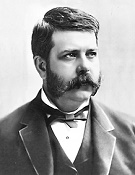 George Westinghouse George Westinghouse
George Westinghouse (1846–1914) was an American entrepreneur and inventor who
played a significant role in the development of the electrical power industry. He
was born on October 6, 1846, in Central Bridge, New York, and died on March 12,
1914, in New York City. In 1886, Westinghouse founded the Westinghouse Electric
Company, which became a major player in the electrical industry. The company focused
on developing and implementing alternating current (AC) power distribution systems.
He was a strong advocate of AC power as opposed to direct current (DC) systems championed
by Thomas Edison. The AC power system, with the help of transformers, allowed for
the transmission of electricity over long distances with less energy loss. Westinghouse
worked closely with the inventor
Nikola Tesla to develop
and promote AC power systems. They implemented AC power in the first hydroelectric
power plant at Niagara Falls, which began operating in 1895 and supplied power to
Buffalo, New York.
Before his involvement in the electrical industry, George Westinghouse gained
fame for his invention of the railway air brake. The air brake was a significant
safety improvement for trains, allowing the train's brakes to be controlled from
the locomotive. He founded the Westinghouse Air Brake Company and the Union Switch &
Signal Company.
|









 Edward Appleton
Edward Appleton Major
Edwin Howard Armstrong
Major
Edwin Howard Armstrong Charles Babbage
Charles Babbage
 Alexander Graham Bell
Alexander Graham Bell Jacques
Bernoulli
Jacques
Bernoulli  Niels Bohr
Niels Bohr Édouard Branly
Édouard Branly Samuel Hunter Christie
Samuel Hunter Christie Arthur C. Clarke
Arthur C. Clarke Sidney Darlington
Sidney Darlington

 Thomas Alva Edison
Thomas Alva Edison
 Philo T. Farnsworth
Philo T. Farnsworth  Jean-Baptiste Joseph Fourier
Jean-Baptiste Joseph Fourier Yuri Gagarin
Yuri Gagarin Hugo Gernsback
Hugo Gernsback 

 Arthur Atwater Kent
Arthur Atwater Kent Jack Kilby
Jack Kilby
 Gustav Kirchhoff
Gustav Kirchhoff

 Guglielmo Marconi
Guglielmo Marconi
 Robert Noyce
Robert Noyce
 Georg Simon Ohm
Georg Simon Ohm J. Robert
Oppenheimer
J. Robert
Oppenheimer Hans Christian Ørsted
Hans Christian Ørsted Jack Phillips - Titanic Radio Operator
Jack Phillips - Titanic Radio Operator Ulrich L. Rhode
Ulrich L. Rhode Ernest Rutherford
Ernest Rutherford 
 Erwin Schrödinger
Erwin Schrödinger Phillip H. Smith
Phillip H. Smith Nikola Tesla
Nikola Tesla Sir Joseph John (J.J.) Thompson
Sir Joseph John (J.J.) Thompson Robert J. Van de Graaff
Robert J. Van de Graaff Robert Watson-Watt
Robert Watson-Watt Thomas A. Watson
Thomas A. Watson Sir Charles Wheatstone
Sir Charles Wheatstone George Westinghouse
George Westinghouse